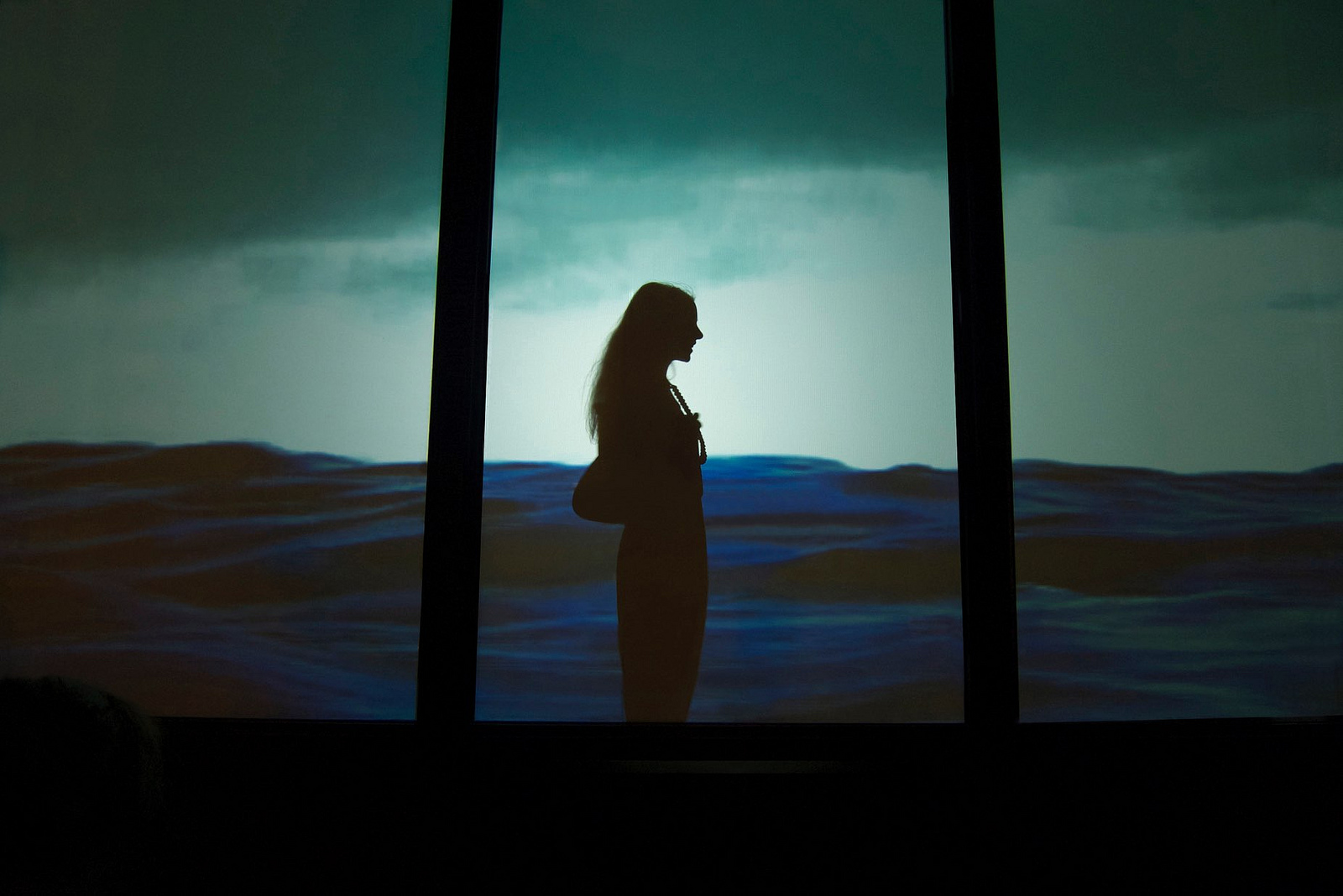Exhibit at Baltimore’s ‘Urban Oasis’ Explores Environmental Concerns
An image from the Eric Corriel work “Water Will Be Here.” Paths of Perception opens at Cylburn Arboretum on March 29th.
Baltimore, MD: Paths of Perception, an experiential and participatory exhibition, addresses environmental affairs through public artworks installed within Baltimore’s Cylburn Arboretum. The show, featuring work of six artists—Eric Corriel, Paul Daniel, Nicoletta Daríta de la Brown, Susan Humphrey, Alfredo Rodriguez Medrano and Samantha Sethi—opens March 29th and will be on view through April 19th. A reception with the artists will be held at Cylburn’s Vollmer Center (4915 Greenspring Ave.) on March 29th from 5 pm – 7 pm.
Curated by Hui (Becky) Li, a candidate of Maryland Institute College of Art’s (MICA) MFA in Curatorial Practice program, Paths of Perception provides insight into how artistic practices can create awareness about the natural world and how nature itself can aid in the creation of works of art. It encourages visitors to explore the beauty of nature, questioning their own ties to the multiple relationships between human activity and the surrounding environment.
Paths of Perception will feature video, sculpture, performance, and installation to underscore timely environmental concerns as it relates to the changing landscape and the continued loss of once-cherished places. Examples include Paul Dainel’s Red Eye (2007), a large-scale kinetic outdoor sculpture that addresses our everyday experience and interaction with nature, and Samantha Sethi’s Cause and Effect (2017), a sculpture of an iceberg made from foam insulation, a material that is antithetical to the iceberg’s existence.
ABOUT THE ARTISTS
Eric Corriel is a public installation artist based in Brooklyn, New York. Eric uses urban landscape as a medium in which to create site-specific video installations. The content of his work is increasingly related to the relevant issues of our time. His work as an artist is to make these issues accessible to the public in an experiential way; a way people can feel.
Paul Daniel is a Baltimore-based artist known for his kinetic outdoor sculptures. His work addresses nature (wind, light, and movement) in urban settings such as median strips or in rural landscapes. The works engage viewers, both pedestrians and auto passengers alike.
Nicoletta Daríta de la Brown is a Baltimore-based healing artist. Nicoletta puts energy into developing works that communicate with her core and to others about the beauty of existence. She draws inspiration from nature, science, modern philosophy, and ancient spiritual rituals. Her goals are to capture memories and facilitate moments. She also aims to achieve vulnerable self-awareness.
Susan Humphrey is a Baltimore-based stained glass artist who is inspired by both the literal and figurative aspects of the natural world. Susan (Sue) seeks to immortalize the beauty of nature with fluid, defined lines of solder, depth, texture, and luminescence of art glass.
Alfredo Rodriguez Medrano is a candidate in the Rinehart School of Sculpture MFA program at MICA. His current project addresses sociopolitical issues such as racial and social discrimination, ecological issues, consumerism, political affairs, and educational struggle.
Samantha Sethi is a Baltimore-based multi-media artist working primarily in drawing, installation, sculpture, and video. Sethi received her MFA from American University where she explored concepts of ephemerality, entropy, human impact on the environment, mapping, and our experience of time. She is currently in the process of producing a newly commissioned installation for Baltimore’s Light City Festival.
ABOUT THE CURATOR
Hui (Becky) Li is a curator and sculptor from China. She received her BFA in 2015 from the Southwest University in Chongqing, China where she majored in Studio Art with an emphasis on drawing, painting, and sculpture. After her undergraduate studies, she immersed herself in Chinese contemporary art as a practicing sculptor. From studying and practicing art, she began to research the social impact that art can have on society as well as inform identities and cultural consciousness, which led her to join the MFA in Curatorial Practice program at MICA. Li believes that curators are the agents that can efficiently support artists while cooperating with communities to address shared goals.
ABOUT EXHIBITION PARTNERS
Cylburn Arboretum is a 200-acre urban oasis in Baltimore City. Cylburn is a place of natural beauty and learning with hundreds of specimen trees and plantings, gorgeous gardens, wooded trails, and a historic mansion. The Cylburn Arboretum Association is the park’s non-profit friends group, enriching and enhancing the arboretum in a variety of ways and providing programs for the community. Cylburn’s buildings and grounds are maintained by the Horticulture Division of Baltimore City Recreation & Parks. Cylburn is also home to the Vollmer Center, the City’s greenhouses and classrooms, the Johns Hopkins Food System Lab, and the UME Baltimore City Master Gardener Program.
Baltimore Green Map encourages the discovery, use, and stewardship of the Baltimore region’s natural, cultural and “green living” resources through its participatory mapmaking processes and education outreach activities. It creates greater public awareness of specific places and opportunities to advance Baltimore’s progress toward building a healthy urban environment for the benefit of all. For Paths of Perception, Baltimore Green Map will be providing mapping software guidance and assistance for a scavenger Hunt public program, which will take place during the exhibition’s run.
ABOUT MICA’S CURATORIAL PRACTICE PROGRAM
MICA’s MFA in Curatorial Practice prepares students to determine how curators will shape the cultural life of our global society. The first MFA of its kind in the country, this program offers a hands-on curriculum that balances collaboration and socially engaged practices with academic research in history and theory. Students work in a variety of experimental contexts and formats, proposing alternative models of exhibition-making, institution-building, and social justice through art. Designed to forge connections among artists, institutions, and communities, the program brings contemporary art and culture to new audiences, and links local issues to international discourse. By creating real-world collaborative and individual exhibitions, our students raise awareness, bridge societal gaps, and catalyze exchanges across various disciplines, both inside and outside the art world.

